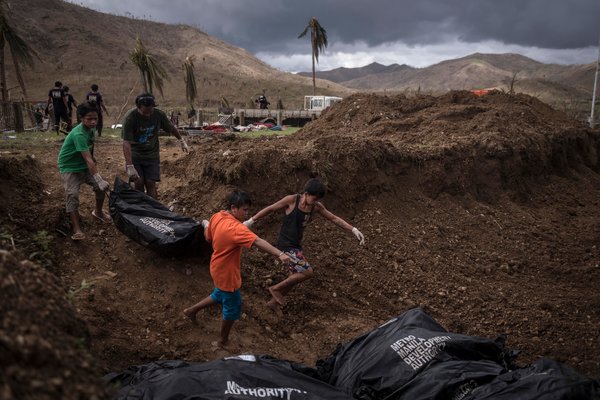
A corpse was carried on Thursday to a mass grave in Tacloban, the city of 220,000 that was flattened by the storm that made landfall a week ago. The number of dead still remains uncertain. Sergey Ponomarev for The New York Times
nytimes.com - by Rick Gladstone - November 14, 2013
The aftermath of the Philippines typhoon is now threatening the country with outbreaks of debilitating and potentially fatal diseases, including some thought to have been nearly eradicated, because of a collapse in sanitation, shortages of fresh water and the inability of emergency health teams to respond quickly in the week since the storm struck, doctors and medical officials said Thursday.
Illnesses including cholera, hepatitis, malaria, dengue fever, typhoid fever, bacterial dysentery and others that thrive in tropical, fetid environments, where sewage and water supplies intermingle, could form what doctors fear is the disaster’s second wave.
(READ COMPLETE ARTICLE)
Recent Comments